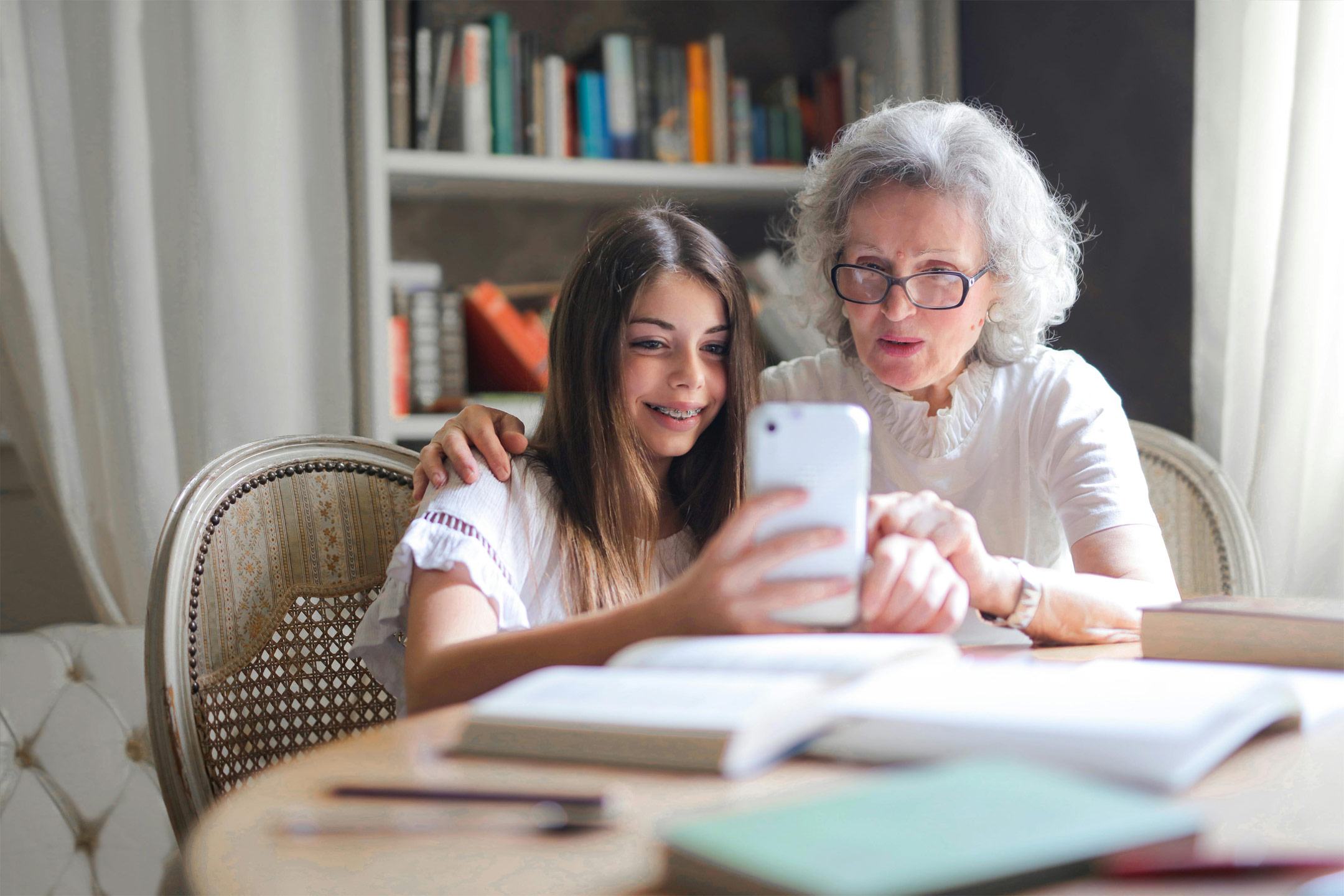
31 Oct How you can use tech to connect grandparents with grandchildren
Alannah & Madeline Foundation * is children and young people, we have created some resources that suggest ways that grandparents can engage and connect with their grandchildren (or young people in their lives) through tech, which is available on our DigiTalk online safety hub for parents and carers.
Six online activities you and your grandchildren can do together
1.Video calls
One of the best things tech has given us is a variety of ways to interact with loved ones when we can’t be in the same physical space. With video calls, you and your grandchildren can easily catch up ‘face-to-face’ between visits. And when you’re physically together, you can both jump on the same device and connect with other family members or friends.
Virtually all devices now feature built-in cameras, so you don’t need to track down and set up a separate one. Along with software like Zoom and Facetime, which are designed specifically for video calls, many of the platforms we use for voice calls and messaging also support video.
2. Games
Online gaming is hugely popular with young people, and it’s an activity where your grandchildren will have fun showing you the ropes of their favourite games.
There’s something out there for all age groups and interests. If there’s a game you and grandchildren enjoy playing offline, like chess or cards, you can bet there’s a virtual version, too.
But online gaming goes far beyond that. You can do everything from solving crossword-type puzzles and simple brain teasers to exploring and building expansive virtual worlds. Multiplayer games like Minecraft and Animal Crossing let you team up with your family members or play against them. With single player games like Wordle or Spelling Bee, you can trade tips, compare scores and engage in a little friendly competition.
We’ve already created a DigiTalk resource all about online gaming, which you can find here.
3. e-Learning Content
In the pre-internet era, if you wanted to learn more about a particular topic, the first (and often only) option open to you was to hit the books. Today, all the information you once would have found by scouring encyclopedias and libraries lives online, and it can be summoned in mere seconds with a few strokes of your keyboard. Online educational content—or ‘eLearning’ content—takes many forms, from eBooks to podcasts, documentaries, online encyclopedias and even whole courses.
Your grandchild might use eLearning content as part of their set schoolwork. If that’s the case, you can help them set a schedule, guide them through tricky or demanding problems and generally support them to stay engaged and get their work done. In other cases, they might just be exploring their own interests. Either way, it’s an opportunity for you to ask questions to understand what they’re doing and how you can help.
4. Researching interesting topics
Is there a special subject you’d love to be able to share with your grandchildren? Maybe you’re passionate about science, or you’d like them to understand something about the time and place where you grew up. By the same token, your grandchildren might have an interest that they’re just bursting to share with you. This is where eLearning content can help you to share knowledge and discover new things together.
Something to remember about online content is that anyone can create it since there’s no vetting process for what gets published. Distinguishing credible sources from ones that are dubious or deceptive and knowing how to fact-check are crucial building blocks for young people’s media and digital literacy.
5. Shows and movies
Watching shows and movies together can be a rewarding, low-effort way to engage with your grandchildren through tech. Apply the same principles that you would use around television when deciding what is appropriate content and how much screen time is enough. Children and Media Australia have a website that can help you choose media that’s suitable for your child.
Some things will be different when watching shows on a tablet or other connected device versus watching a traditional TV—popular websites like YouTube have lots of child-friendly content, but they also have plenty that is meant for adults only. As always, it’s important to supervise young people whenever they’re using tech rather than leaving them to their own devices (excuse the pun).
6. Looking at photos and sharing memories
Digital tech has transformed the family photo album. The huge, heavy tomes that once occupied entire bookshelves have been replaced by digital archives. We now carry around thousands of photos on the smartphones in our pockets, along with high-definition cameras.
This makes it easier than ever to take and share photos of the people and things that are important to us. You can also scan your existing hard-copy photos to store digitally. And once they’ve been stored, there are all sorts of ways to arrange and display them, from themed albums to animated slideshows. Of course, your grandchildren may not always want to spend hours looking through their old baby photos and holiday snaps. But sooner or later, they will want to return to those memories, and they’ll be grateful you took the time to save them.
These six activities should be enough to get you started, but there’s no reason to stop here. The digital world is huge and constantly expanding – once you start to get to grips with the landscape, you’ll realise there is no limit to the things you and your grandchildren can explore together.




